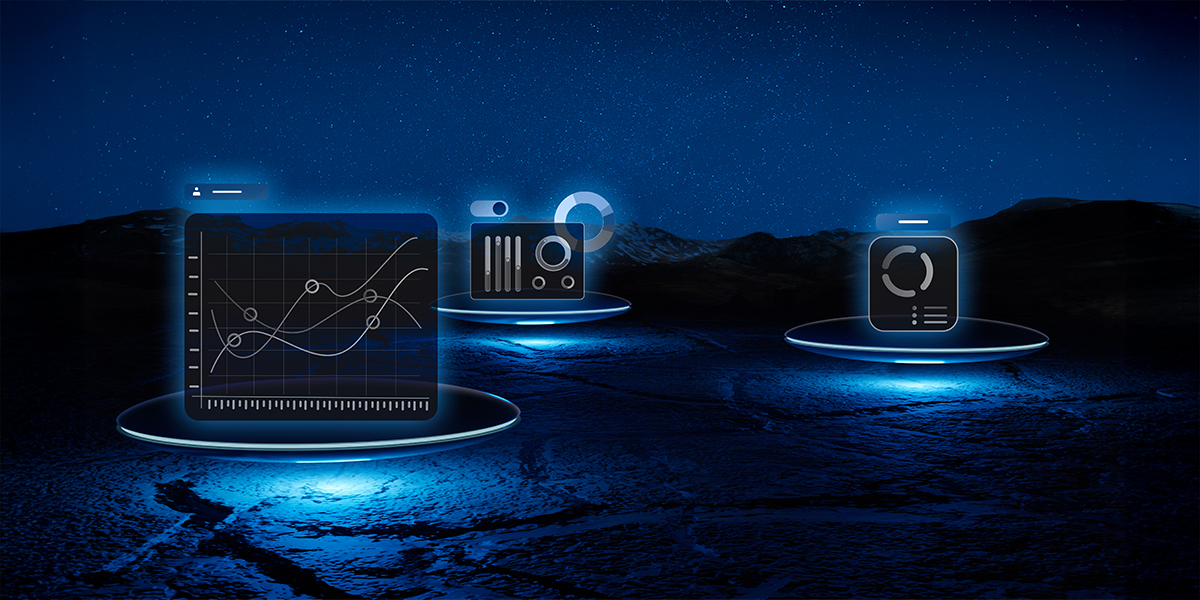The top data engineering trends shaping 2025

Key Highlights:
- Data mesh is replacing traditional centralized architectures for better scalability and governance.
- Real-time data processing is becoming essential across industries like banking and e-commerce.
- AI-driven automation is revolutionizing data pipelines, reducing manual work and improving accuracy.
- Hybrid and multi-cloud strategies are redefining enterprise cloud adoption for scalability and compliance.
- Low-code and no-code platforms are democratizing data engineering, enabling faster innovation.
The data revolution is here
What’s shaping data engineering trends in 2025? Data is growing at an unprecedented rate and businesses that fail to adapt to risk are falling behind. With the rise of AI, cloud computing, and real-time analytics, data engineering is evolving faster than ever. The real question is: Are you ready for what’s coming?
In 2025, several data engineering trends will redefine how companies store, process, and analyze data. If you’re a business leader, data engineer, or IT strategist, keeping up with these trends is a necessity. Let’s dive into the most significant shifts shaping the future of data management.
A shift towards data mesh for scalable architectures
For years, companies have relied on centralized data lakes and warehouses to store massive amounts of data. But as data volume and complexity grow, these models are struggling to keep up. Data mesh offers a solution by decentralizing data ownership, empowering domain teams to manage their data as independent products.
Why it matters:
- Scalability – No more bottlenecks from a central team managing all data.
- Faster access – Business units own their data, reducing delays in insights.
- Improved governance – Data is more organized and aligned with business needs.
Real-time data processing has become the norm
Batch processing is no longer enough. In banking, e-commerce, cybersecurity, and logistics, companies need real-time insights to stay competitive. Whether it’s fraud detection in banking or personalized recommendations in e-commerce, streaming data pipelines are a game changer. Transitioning from batch ETL to real-time ELT models enables businesses to act instantly on critical insights, enhancing customer experiences and operational efficiency.
Read more: ETL vs ELT: How to choose the right data integration approach for your business
AI-powered data engineering: automation takes center stage
AI is reshaping data engineering, automating everything from data mapping and anomaly detection to self-healing pipelines. AI-driven automation minimizes manual work, ensuring higher accuracy, better efficiency, and seamless adaptability as data landscapes evolve. Businesses adopting AI-first data engineering strategies gain a significant competitive advantage.
Data governance and compliance: from afterthought to priority
With evolving regulations like GDPR and CCPA, organizations must focus on data privacy, security, and compliance. Tracking data lineage, implementing role-based access control, and automating compliance reporting will be critical in 2025. Companies that proactively address these areas will mitigate risks while building trust with customers and stakeholders.
The cloud vs. hybrid vs. multi-cloud dilemma
Cloud computing continues to be a major driver of scalability and agility, but companies now face choices—stick with a single cloud provider, adopt a hybrid cloud, or go multi-cloud. While multi-cloud strategies enhance redundancy and avoid vendor lock-in, industries like healthcare and finance require hybrid models for regulatory compliance. Each approach has trade-offs, and selecting the right cloud strategy will be a defining factor for businesses in 2025.
Read more: The role of automation in modern cloud migration methodology.
The rise of data-as-a-product
Data is no longer just a byproduct—it’s a monetizable asset. Companies are building data marketplaces, offering real-time insights as a service. Businesses leveraging data-as-a-product strategies are unlocking new revenue streams, enhancing customer experiences, and positioning themselves as industry leaders.
Low-code and no-code data engineering trends
Not every organization has a large team of data engineers. Low-code and no-code platforms are bridging this gap, empowering business users to build and manage data pipelines with minimal technical expertise. Tools like Google Dataflow, AWS Glue, and Databricks AutoML are making data engineering more accessible, driving innovation across industries.
Staying ahead of the data curve
The data engineering trends of 2025 will reshape how businesses manage and utilize data. Whether it’s embracing data mesh, leveraging AI-driven automation, or optimizing cloud strategies, businesses must act now to stay competitive.
What’s your next move?
If your organization is ready to modernize its data strategy, Netscribes can help. Our data engineering services provide scalable, AI-powered solutions tailored to your needs. From real-time analytics and data governance to cloud strategy and automation, we help businesses unlock the full potential of their data. Get in touch today for a consultation and future-proof your data strategy.






